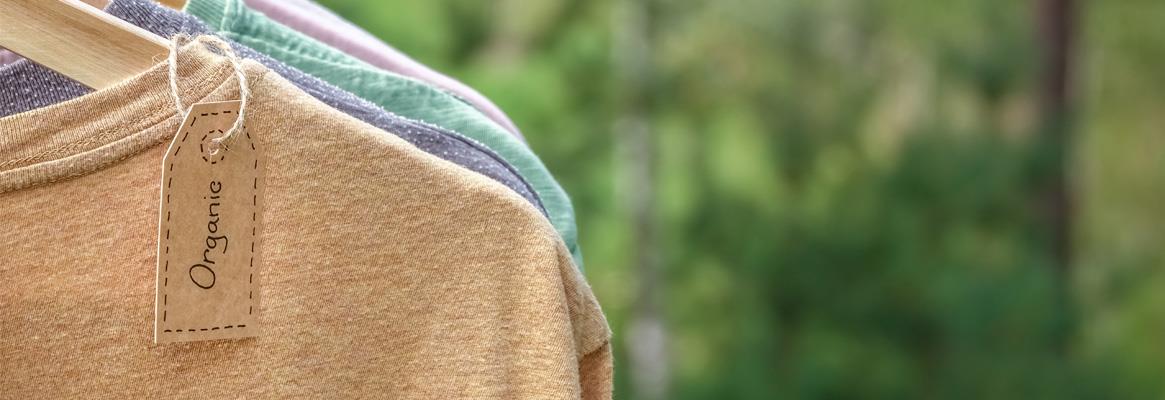With rising awareness of slow fashion, sustainability, new-generation fibres, eco-friendly processing, sustainable packaging and assessment of product life cycles, S Aishwariya and S Greeshma discuss the concept, its merits, new textile fibres and eco-fashion tags.
Sustainable textiles are materials in which every input and output matters. The materials used, processes involved, quality of life led by labourers and the afterlife of the product are evaluated and quantified. The resources and materials used for sustainable textiles are obtained from renewable or recycled sources. Sustainable fabrics are produced with limited impact and can be categorised in the following different ways:
1. Organic: Crops cultivated with bio-fertilizers and organic manures without the usage of pesticides, chemicals or synthetic fertilizers
2. Eco-textiles: Products manufactured through eco-friendly measures and certified by agencies like Oekotex and IFOAM
3. Recycled and Biodegradable: Natural and synthetic fibres that are biodegradable are broken down into pieces to produce more textiles or fibres.
4. Textile Processes and Sustainability: Fabrics and textiles are produced by taking into consideration each step from cultivation to printing and finishing processes. Lesser the chemicals and effluents, better the environment.
Eco-design
Eco-design refers to design of products with less environmental damage. It is an approach to designing products with special consideration for the environmental impacts of the products during its whole life cycle. In simple terms, the resources and materials used in developing a product are taken into consideration while minimising the negative impacts on the environment.
Eco-designing also increases the aesthetic and functional properties of a product. The method used for assessing the impact on environment and resource consumption is known as life cycle assessment. It starts from raw material to the repair and disposal of the products. Life cycle assessment is considered a tool to support eco-design by giving sustainable choices to the designers.
Principles of eco-design
Eco-design principles involve making a choice for
• Materials: ecological, reusable, recyclable and non-toxic for environment, recoverable
• Environment-friendly technologies, requires little energy consumption, material and fuel
• Dimensions and shape of the products corresponding to optimal and aesthetic functions
• Colour variants not being harmful to the users and the environment.
• Merge mode
• Materials and accessories that are subjected to the ratio price or quality

The approach
Eco design is called 'multi-step' and 'multi-criteria'-part of a global approach. It takes care of specific criteria in different stages like raw material extraction and supply, manufacturing, product distribution, consumer use and end-of-life (recovery and recycling). The major goals include:
• Use of fewer materials and resources for manufacturing
• Use of materials and resources with minimal environmental impact
• Producing the least waste and less pollution
• Reducing the ecological impact of distribution
• To make reuse and recycle easier by an intelligent design that makes disassembly easy
Merits of eco-design
The key aspects of going eco-friendly are:
• Social responsibility: Use of chemicals and pesticides pollutes drinking and ground water, fishes, and even humans who consume it. Therefore organic and eco-fibres are produced without chemicals and pesticides.
• Biodegradable: Organic and eco-fibres degrade gradually and naturally, whereas synthetic fibres become waste and release a lot of toxins during degradation.
• Health: Synthetic fibres are sometimes harsh on the skin and cause allergic reactions. Eco-fibres, on the other hand, are breathable with softness, drape and better feeling against the skin.
• Absorption: Clothing with synthetic fibres are worn next to porous skin and the chemicals present in the clothes are absorbed by the skin. Organic fibres are mostly hypoallergenic and anti-bacterial.
• Popularity: Due to evolution, organic and eco-friendly fabrics have gained popularity and become an alternative entering mainstream fashion.
Sustainable fibres for eco-design
Any organic or natural fibre is sustainable whereas synthetic and man-made fibres are rejected in the ground level itself. Sustainability challenges in fibre production vary for different materials and it must be assessed individually. Factors include:
• Significant use of energy and non-renewable resources
• Emissions and effluents from fibre production
• Impact on water linked to natural fibre production
Some of the sustainable or eco-friendly fibres are:
(i) Bamboo:

Bamboo is a type of grass that needs no fertilizers or pesticides for its growth. It also requires very less amount of water for its rapid growth. The fabric produced from bamboo fibre is silky, has moisture wicking properties and is durable.
(ii) Chitin:

It is made with a blend of viscose and chitin. Chitin is a substance found in the shells of crabs and other crustaceans. Chitin is biodegradable and creates an anti-bacterial and hypoallergenic fabric. It is obtained as a by-product from the food industry, which means that the shellfish are not harmed.
(iii) Fish skin leather:

This is produced from the waste of the food industry from the skins of fish like cod, carp, sturgeon, catfish, salmon, perch and wolf fish. Leather can be used in handbags, belts, clothing, accessories and shoes, furniture and interior decoration.
(iv) Lotus flower fabric:

The textile is made from lotus stem fibres, extracted and made into a yarn by hand spinning. It is believed to be one of the most sustainable and sacred fabric in the world and was worn by saints in the olden days. Mostly woven by hand, these handloom textiles resemble the look and feel of silk and linen. These are soft, breathable, wrinkle free, stain repellent and waterproof.
(v) Byssus:

Pen shells secrete byssus or sea silk in their lower body. Textiles from this are finer than silk, that a pair of women gloves can fit inside a walnut shell. These are termed as ultra rare fabrics that are impalpable and light in weight. Artisans of Sardinia islands are holding intact the tradition of byssus textiles.
(vi) Banana fibre:

This is produced from the stalks of the banana plant. The long fibres are spun into silky threads that are used in rugs and interior textiles.
(vii) Milk fabric:

Casein, the milk protein, has incredible properties that makes it a sustainable fabric with pH similar to that of human skin. Similar to milk, the material from milk has the beneficial amino acids that have anti-bacterial and anti-ageing qualities. It is believed to regulate blood circulation and reduce body temperature.
(viii) Nettle fabric:

This is made from the stem of stinging nettle plant found abundantly near the Himalayas and popular in Uttarakhand. The plant requires less water and after cultivation, can be layered back in the field to fix the lost nutrients, which makes the plant sustainable. Textiles from these also carry the same merit as these do not use pesticides and are eco-friendly. It is finer, stronger and more elastic than linen and is soft and luxurious in nature. The common end uses include strings, rope, net, bag, sack, jacket, mat, vest, shawl, cattle feed, stuffing in upholstery, fuel and blue dye.
(ix)Pineapple silk (pina):

In India, pineapple is a commonly used fruit. Pina is a textile material derived after processing pineapple leaves. The hand-spun and hand-woven textile has a glossy look and stiff touch. The ivory shade textile is known to have cooling properties and good dyeability. Pinatex is a brand that creates fashion, accessories and footwear from pineapple leaves.
A new sustainable brand is launched everyday in textiles, fashion, apparel and home textiles. Sustainable production is the need of the hour. Interesting initiatives make the eco-design sector more promising with the potential to grow in the coming years. For example, Pinatex, the alternative apparel brand uses oxo-biodegradable mailer bags and has also implemented vendor recycling programme. It uses organic cotton in place of conventional cotton, and recycles about 1.8 million plastic bottles. Another popular brand in India, Upasana uses organic cotton blended with curative ayurvedic herbs like tulsi, sandal and neem. The garments produced from these fibres give not only medicinal effect but also distinctive colours. Levi's in keeping with its motto of 'Every Drop Counts', recycles the used water during production by creating new finishes that require less water. More such shifts in eco-design process will be increasingly visible in the years ahead.

20240830145908.gif)
20240924091633.png)


20240924111837.jpg)




Comments